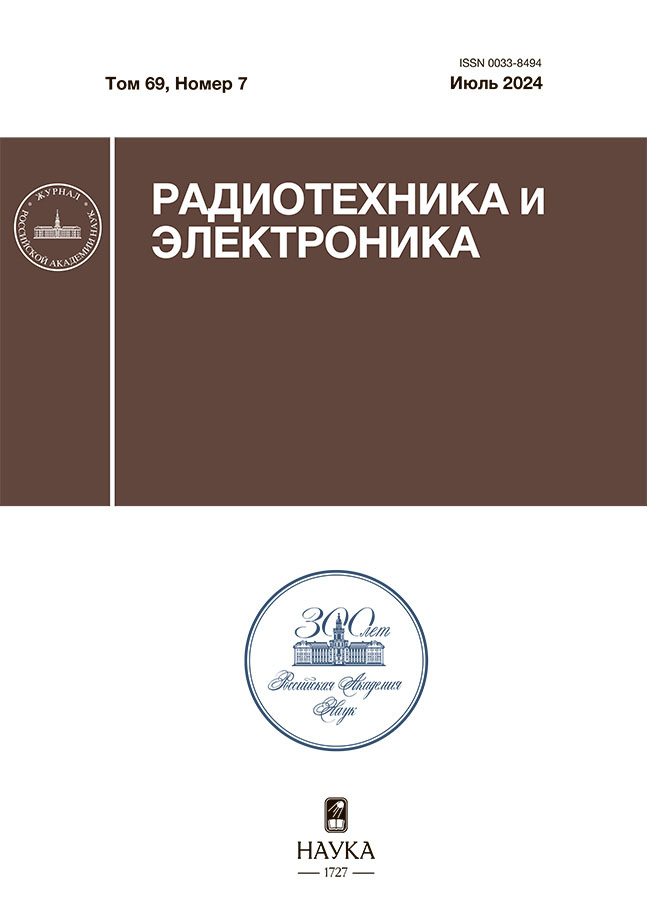Application of high–frequency impedance model of metal–three-layer insulating gap-silicon structures to characteristics of real objects
- Autores: Belorusov D.A.1, Goldman E.I.1, Chucheva G.V.1
-
Afiliações:
- Kotelnikov Institute of Radioengineering and Electronics of Russian Academy of Sciences
- Edição: Volume 69, Nº 7 (2024)
- Páginas: 664-668
- Seção: НАНОЭЛЕКТРОНИКА
- URL: https://kazanmedjournal.ru/0033-8494/article/view/681463
- DOI: https://doi.org/10.31857/S0033849424070084
- EDN: https://elibrary.ru/HYVABJ
- ID: 681463
Citar
Texto integral
Resumo
Based on the phenomenological model of high–frequency impedance, the shape of field characteristics and values of capacitances and conductivities measured in experiments on a metal–dielectric-semiconductor structure with a three-layer insulating layer of two different ferroelectrics and silicon oxide are analyzed. It is shown that the typical form of impedance characteristic graphs with two plateaus in the region of negative and positive field voltages for structures with an insulator made of ferroelectrics or dielectrics does not indicate the dielectric quality of an insulating gap. It is noted that the presence of two plateaus in experimental graphs of the high-frequency voltage-capacitance-characteristic and the field dependence of the conductivity of these structures is not evidence of the implementation of deep depletion and strong enrichment states in a semiconductor. It is indicated that abnormally large values of measured impedance components, compared with those calculated on the basis of the geometric capacitance of the insulating layer, may be associated with the high, close to metallic, conductivity of the oxide film.
Texto integral
Sobre autores
D. Belorusov
Kotelnikov Institute of Radioengineering and Electronics of Russian Academy of Sciences
Email: gvc@ms.ire.rssi.ru
Fryazino branch
Rússia, Vvedensky Sq., 1, Fryazino, Moscow region, 141190E. Goldman
Kotelnikov Institute of Radioengineering and Electronics of Russian Academy of Sciences
Email: gvc@ms.ire.rssi.ru
Fryazino branch
Rússia, Vvedensky Sq., 1, Fryazino, Moscow region, 141190G. Chucheva
Kotelnikov Institute of Radioengineering and Electronics of Russian Academy of Sciences
Autor responsável pela correspondência
Email: gvc@ms.ire.rssi.ru
Fryazino branch
Rússia, Vvedensky Sq., 1, Fryazino, Moscow region, 141190Bibliografia
- Воротилов К.А., Мухортов В.М., Сигов А.С. Интегрированные сегнетоэлектрические устройства / Под ред. А.С. Сигова. М.: Энергоатомиздат, 2011.
- Liu Y., Yang B., Lan Sh. et al.// Appl. Phys. Lett. 2022. V. 120. № 15. P. 150501. doi.org/10.1063/5.0090739
- Park J. Y., Yang K., Lee D. et al.// J. Appl. Phys. 2020. V. 128. № 24. P. 240904. doi.org/10.1063/5.0035542
- Wang B., Huang W., Chi L. et al.// Chem. Rev. 2018. V. 118. № 11. P. 5690. doi.org/10.1021/acs.chemrev.8b00045
- Belorusov D.A., Goldman E.I., Chucheva G.V. // Ceramics Int. 2021. V. 47. № 15. P. 21248. doi.org/10.1016/j.ceramint.2021.04.129
- Белорусов Д.А., Гольдман Е.И., Чучева Г.В. // ФТТ. 2021. Т. 63. № 11. С. 1887. doi.org/10.21883/FTT.2021.11.51592.154
- Belorusov D.A., Goldman E.I., Chucheva G.V. // Ceramics Int. 2024. V. 50. № 6. P. 9678. doi.org/10.1016/j.ceramint.2023.12.286
- Черняев М.В., Горохов С.А., Патюков С.И., Резванов А.А. // Электрон. техника. Сер. 3. Микроэлектроника. 2022. № 3. С. 31. doi.org/10.7868/S2410993222030058
- Иванов М.С., Афанасьев М.С. // ФТТ. 2009. Т. 51. № 7. С. 1259.
- Киселев Д.А., Афанасьев М.С., Левашов С.А., Чучева Г.В. // ФТТ. 2015. Т. 57. № 6. С. 1134.
- Гольдман Е.И., Ждан А.Г., Чучева Г.В. // ПТЭ. 1997. № 6. С. 110.
- Sze S.M., Kwok K.Ng. Physics of Semiconductor Devices. 3rd ed. N.Y.: John Willey @ Sons, 2007.
- Nicollian E.H., Brews I.R. MOS (Metal Oxide Semiconductor) Physics and Technology. N.Y.: John Willey @ Sons, 1982.
Arquivos suplementares












